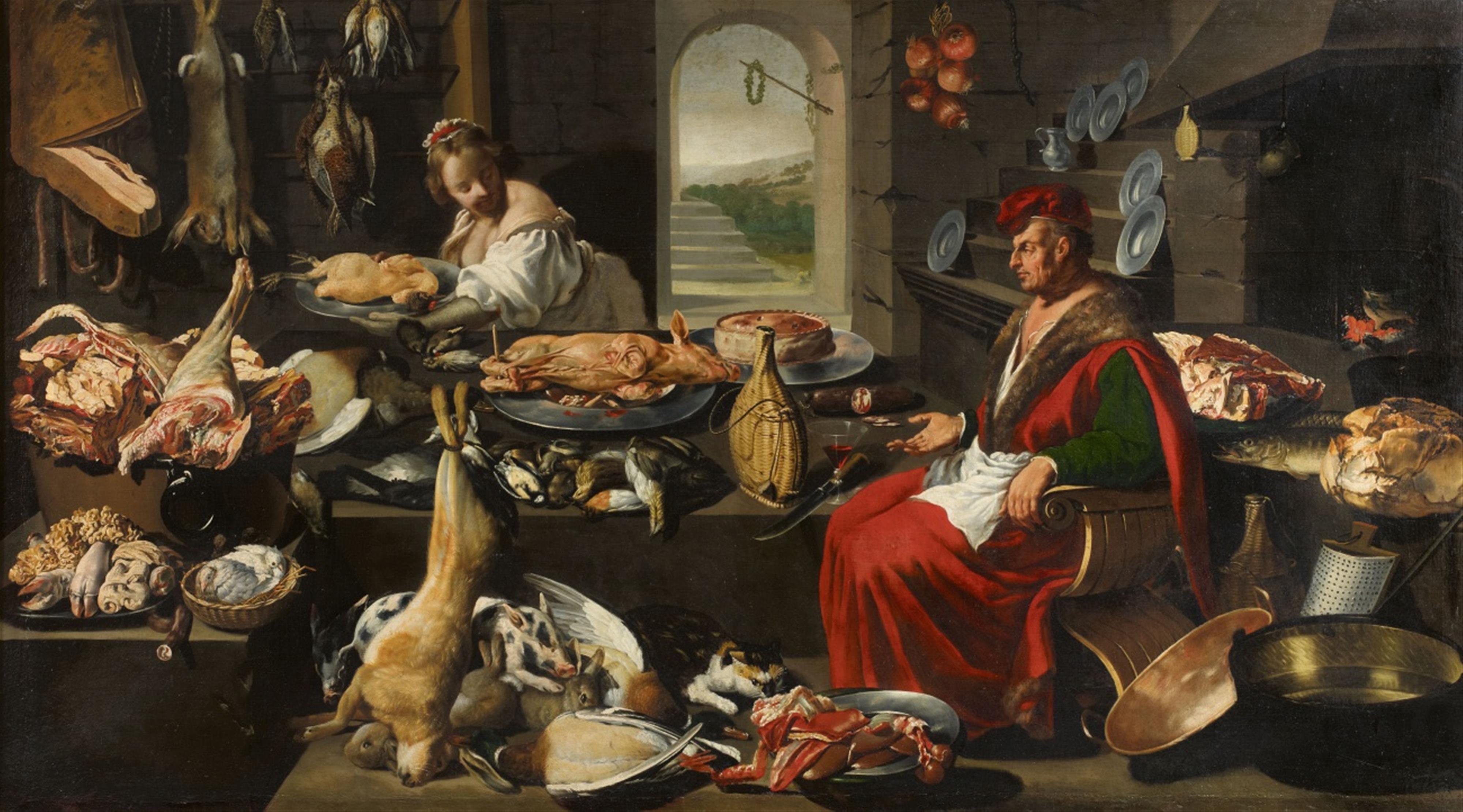Italian-Flemish School, circa 1630
Kitchen Still Life
Oil on canvas (relined). 150 x 268.5 cm.
This work shows a broad view into a kitchen with a landscape seen through a window arch on the far wall. A supervisor in a red outfit can be seen giving instructions to a maid, who carries them out with practised efficiency. The opulent effect of this unusually large and representative work derives from the masses of different foodstuffs, especially meat, shown piled high on tables, ledges, shelves, and hanging from the ceiling. We see fresh game and various birds hung in bunches from hooks or huddled in a cage awaiting their end, together with prepared meats, a piglet ready for roasting, as well as pies, sausages, bread, fish, and copper vessels.
Despite several suggestions, no binding attribution has been made for this painting thus far. Some artists considered include the so-called “Pensionante del Saraceni”, an anonymous artist presumably of French origin. Roberto Longhi coined this whimsical notname, which translates roughly as “Saraceni's Tenant”, in 1943, as the appears to have been a close follower of Saraceni. Upon examination of the original, the expert for Genoese painting Anna Orlando has also tentatively suggested an attribution to Giacomo Legi, an artist active in Genoa but thought to be Flemish. Further suggestions of Abraham Bloemaert or Pieter van Bouclé were also not entirely convincing, and thus the work is assumed, as Anna Orlando also proposed, to be a collaborative effort between several artists. These painters must have been proponents of the Roman Baroque style, influenced by Caravaggio, and were possibly of Flemish or French origin.
Provenance
Auctioned by Christie's, London, 7.7.1995, lot 96 (attributed to Italian School of the 17th century).

